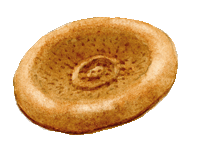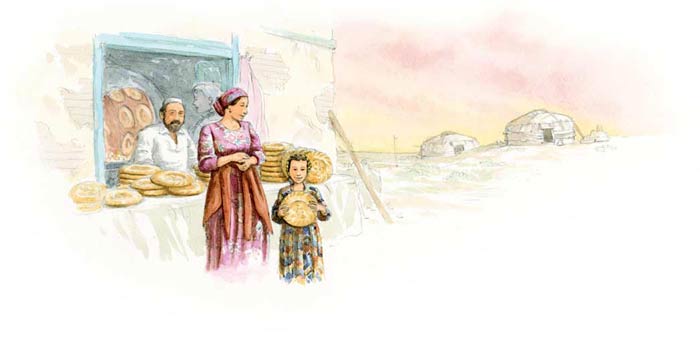Obi-non or lepyoshka

Form: Flat bread up to 30 cm in diameter
Country of origin: Uzbekistan
What distinguishes it from other methods of bread making: It has a distinctive marking on the top
Category of bread: (2) It belongs to the family of flat breads, and is very close to Indian chapati or roti, Indian and Pakistani paratha, Iraqi samoun, etc. to name a few
Particularity: One of the oldest breads known to man
Ingredients: Wheat flour; yeast; water; salt

Uzbekistan
The tradition of bread in Uzbekistan goes back to the origins of civilization. No other people since the prehistoric hunters and gatherers starting cultivating the land and keeping herds knows better than the Uzbeks how to come up with unprecedented varieties that a mixture of flour and water can give. Today, these regions make up the borders of Iran, Turkmenistan, the north of Afghanistan, Uzbekistan and Tajikistan, where specialists consider the first sedentary peoples to have settled. It is therefore not surprising that obi-non and lepyoshka are mentioned in the oldest accounts of humanity: the Epic of Gilgamesh, written in Akkadian and dating from the 18th century A.D.
The reputation of lepyoshka is not based on archeological and scriptural vestiges. It is said that the lepyoshka that the Samarkand bakers made at the height of the city’s splendor (before Genghis Khan destroyed the city in 1220) were highly appreciated and sought-after, even venerated, and a pure delight to the palate.
This dough is made of wheat flour sprinkled with yeast and spiced in various ways. It is customarily marked or stamped before being thrust into the oven, which is what gives lepyoshka its special physiognomy. Although it is the national bread of Uzbekistan, it is often considered as a perfectly balanced meal all on its own when garnished with Caucasian walnuts, raisins, and a dish made with chickpeas. It is the inseparable companion of plov, the national Uzbek dish made with highly spiced mutton.

